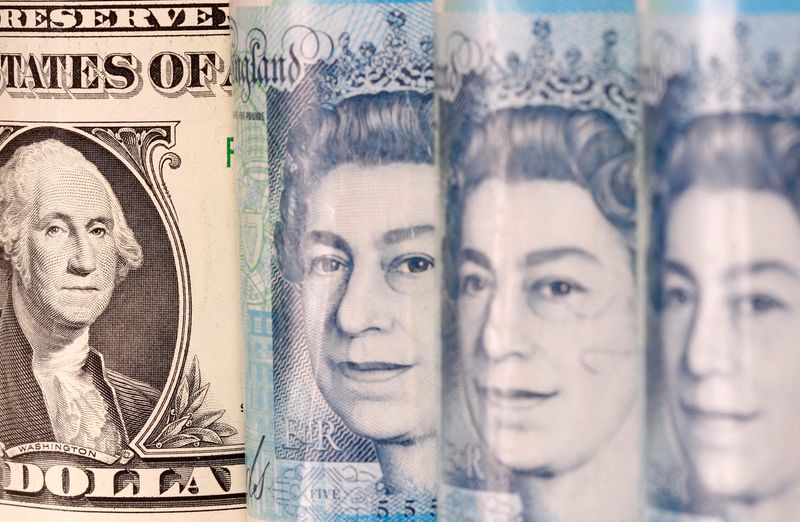Sterling at 14-month low as gilt yields rise again
2025.01.13 08:15
By Samuel Indyk
LONDON (Reuters) – The British pound extended its recent drop against the dollar and the euro on Monday driven by investor concerns about Britain’s fiscal sustainability as gilt yields rose for a sixth straight day.
Sterling fell as much as 0.7% against the dollar to $1.2103, its lowest level since November 2023. It was last down 0.6% at $1.2125.
Against the euro, the pound was down 0.2% at 84.10 pence.
The pound has been in the crosshairs of global currency traders with British markets hit by surging global bond yields, which most have said originated from the United States due to concerns about rising inflation and lower chances of rate cuts from the Federal Reserve.
Strong U.S. labour market data released on Friday added momentum to global bond yields, with money markets no longer fully pricing in any rate cut from the Fed this year.
While higher yields often support the currency, in Britain analysts expect the government may have to rein in spending or raise taxes to meet its fiscal rules, potentially weighing on future growth.
“Clearly something is coming to a head and it’s not because of anything the UK has done over the last two weeks, it’s because of the sensitivity of the UK’s fiscal dynamics to rates and inflation,” said Dominic Bunning, head of G10 FX strategy at Nomura.
“The question for me is if yields start to stabilise, is that enough of a respite that this sell-off starts to slow or takes a bit of a breather?”
Britain’s 10-year gilt yield was up 4 basis points on Monday at 4.879%, just below last week’s 2008 high of 4.925%. It rose over 24 basis points last week, its biggest weekly rise in a year. Bond yields move inversely to prices.
Britain’s 30-year yield rose to its highest level in 27 years on Monday to 5.472%.
Attention this week was also likely to be on British inflation data on Wednesday which could have a near-term impact on the Bank of England’s monetary policy.
Consumer prices are expected to have risen 2.6% annually in December, in line with November, but core CPI is forecast to have moderated to 3.4% from 3.5%.
“This week’s release of the December UK CPI data will be crucial in fine-tuning expectations around the risk of a rate cut next month,” said Rabobank senior FX strategist Jane Foley.

“Heightened expectations of a February BoE rate cut would likely put the 1.20 level in view.”
Futures markets are pricing in around 16 basis points of easing at the BoE’s February meeting, implying around a 65% chance of a quarter-point rate cut.








